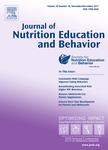版权所有:内蒙古大学图书馆 技术提供:维普资讯• 智图
内蒙古自治区呼和浩特市赛罕区大学西街235号 邮编: 010021

作者机构:Colorado State University Dept. Food Science & Human Nutrition 102 Gifford Building Colorado State University Fort Collins CO 80523 Washington State University Youth and Families Program Colorado State University Dept. Food Science & Human Nutrition Washington State University Extension Youth and Family Unit Washington State University Dept. of Human Development Baylor College of Medicine Dept. of Pediatrics
出 版 物:《Journal of Nutrition Education and Behavior》
年 卷 期:2020年第52卷第7期
页 面:S38-S39页
学科分类:12[管理学] 1204[管理学-公共管理] 120402[管理学-社会医学与卫生事业管理(可授管理学、医学学位)] 1004[医学-公共卫生与预防医学(可授医学、理学学位)] 10[医学]
摘 要:Objective Determine if peer educators can simultaneously deliver 3 arms of a randomized control trial while maintaining curriculum fidelity. Use of Theory or Research Implementation Science principles Target Audience Expanded Food and Nutrition Education Program participants (n = 540, enrolled) in Washington and Colorado; experienced peer educators (n = 11). Program Description A randomized control trial with 3 arms, each with English and Spanish classes. The same educators taught Control, In-class, and Online arms. All participants, including the Control arm, received 9 lessons using the Eating Smart • Being Active (ESBA) curriculum. In-class participants watched videos on parent feeding behaviors (adapted from previous work) and participated in related educator led activities. Online participants received texts with links to 7 videos and activities between face-to-face lessons but no in-class content. Evaluations occurred at Pre-, Post-, 6- and 12 months post. To address fidelity, educators received extensive training and practice opportunities. Multiple observations in each class series and educator-supervisor discussions assessed and reinforced fidelity. Evaluation Methods Detailed class observation forms, tailored to the specific intervention arm, assessed adherence to ESBA and parent feeding information as well as any cross-contamination of parent feeding behavior information between arms. Open-ended phone interviews with educators post-program. Results One hundred and twenty-eight observations, 58 in English and 70 in Spanish, with 40-45 per arm. The Control group received no parent feeding behavior information; ESBA lessons were delivered as intended 89% of time. In the Online group, minor parent feeding behavior information was shared during 7% of the observations; ESBA lessons were followed 87% of the time. The In-class group delivered the parent feeding behavior information appropriately 84-90% of the time. Most issues were minor and, typically, involved